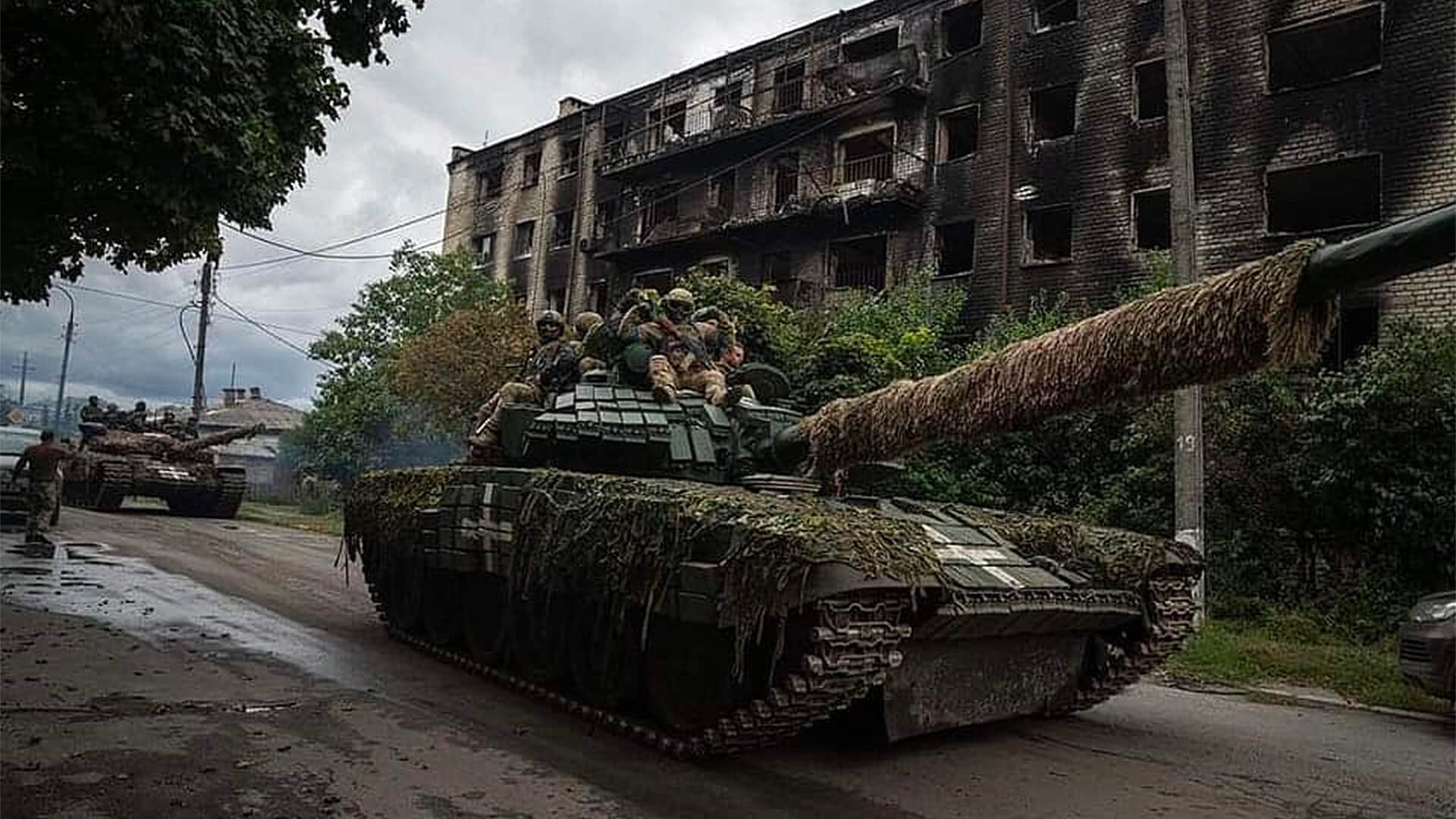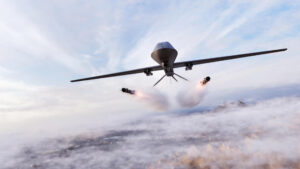We’re wrapping up our Ukraine War Q&A series with the most depressing question yet…how long can this war last?
There’s the dark, really dark, and truly dark.
The dark answer is that Russia’s current problems can be attributed to mobilization issues and ammo. Russia still has a deep reserve of armored vehicles and supplies they can tap into…Ukraine doesn’t…and the Western logistical chain is not as good as we would hope. Yes, the US has a significant backlog of equipment, but most other countries do not (and in many cases, they are competing with Ukraine to ramp up their own production).
The really dark answer is that Russian wars are rarely quick. If neither side of this conflict can maintain current industrial output levels, this could likely become the status quo of living on the Russian borderlands.
The truly dark answer is that the demographic situation in Ukraine before this war was already terrible and is now likely terminal. No matter how this war shakes out, we could very well be in the final generation of Ukraine.
If Russia continues down this path of denuding its occupied territories of children, in ten years, there won’t be anyone left to fight, let alone reconstruct the country.
Prefer to read the transcript of the video? Click here
Here at Zeihan On Geopolitics we select a single charity to sponsor. We have two criteria:
First, we look across the world and use our skill sets to identify where the needs are most acute. Second, we look for an institution with preexisting networks for both materials gathering and aid distribution. That way we know every cent of our donation is not simply going directly to where help is needed most, but our donations serve as a force multiplier for a system already in existence. Then we give what we can.
Today, our chosen charity is a group called Medshare, which provides emergency medical services to communities in need, with a very heavy emphasis on locations facing acute crises. Medshare operates right in the thick of it. Until future notice, every cent we earn from every book we sell in every format through every retailer is going to Medshare’s Ukraine fund.
And then there’s you.
Our newsletters and videologues are not only free, they will always be free. We also will never share your contact information with anyone. All we ask is that if you find one of our releases in any way useful, that you make a donation to Medshare. Over one third of Ukraine’s pre-war population has either been forced from their homes, kidnapped and shipped to Russia, or is trying to survive in occupied lands. This is our way to help who we can. Please, join us.
CLICK HERE TO SUPPORT MEDSHARE’S UKRAINE FUND
CLICK HERE TO SUPPORT MEDSHARE’S EFFORTS GLOBALLY
TRANSCIPT
Finally, and probably the most depressing question of them all, how long could this war last? I mean, no war lasts forever, does it? Let me give you the dark answer, the really dark answer, and then the truly dark answer.
So first, the dark answer. This at the moment is an issue of mobilization and ammo. The Russian military support system, the military industrial complex, is clearly not doing well. So much money has been stolen from the system that it’s difficult for the Russians to get stuff to the front and their internal logistical system is trash. So between not having as much as they thought they did. Between the government being fleeced blind by their own defense minister, Ukrainians interfering with transport systems via drones and sabotage and artillery strikes and general status of disarray of the Russian transport infrastructure. It’s an open question how long the Russians can go with this. Now they do have 70 years of reserves. And, you know, whenever we see a 1940s or fifties tank brought out, we’re like, ha ha ha, look, they’re pulling their old shit out. Well, couple of things there. Number one, they have shit to pull out. The Ukrainians don’t. And second, we’re seeing this old stuff come out because some of the newer stuff just takes longer to refurbish. If you have a pre optics tank getting that back into condition just requires some refurbishment, some more tubing, maybe running some fresh oil on it. You’re good to go. If you got 1970s and eighties styles, optics, you need to now replace those. And that means a much more expensive and lengthy overhaul. You may get a better tank out of it on the back end, but it does take more time and money. So they’re bringing out their old stuff first. They still have several million more armored vehicles that they can throw into this. Now, it’s a limited quantity. Yes, but, you know, Ukraine is basically limited now to what it captures from the Russians and what the West sends.
Which brings us to the second point. How much durability is the logistical chain on the western side? It’s not as good as you think. When 1992 happened, the Cold War ended. Pretty much every country in Europe started to slim down their defense budgets until we got to the point in 2022, when the Defense Ministry in Germany was actually appointed by a woman whose goal was to shut down the military completely. And that means that what they do have is either old or in need of refurbishment or is from a very thin crust of stuff that has been purchased in the last 30 years. Well, most of that thin crust has already been committed, either to the military’s of these forces themselves, because now the Russians are on the warpath. Nobody wants to completely disarm or the stuff has already gone into Ukraine. So you have to build new stuff if you want to send it. And the Ukrainians have to compete with all of these countries who now want to beef up their own military because, you know, the Russians are on the warpath. Now, in the case of the United States, there’s a lot deeper tranche of things to pull from because we spent 20 years in the war on terror, which means we spent 20 years building out our military for a task it wasn’t designed for, and we were upgrading our actual, quote, real military assets, you know, our jets and our tanks and everything at the same time. So the United States has a significant backlog of all of that stuff that we would have used to fight a war back in the nineties, in the eighties. We don’t use any of it anymore. We actually have to dispose of it. So from a weird point of view, the Ukrainians are doing us a budgetary solid by taking our old stuff off and disposing of it in the Russians mouths. But even here, a limited supply. So we’re trying to spin up artillery creation here. The Europeans are using some of their solidarity funds to buy ammo. But in all cases, you’re talking about needing to triple or quadruple our current manufacturing facility. For a lot of this equipment simply to keep with where we are right now. The process has been started, but it’s expensive and it’s time consuming and we’re not going to see a real impact, especially on the European side this calendar year. We’re really talking about the second half of 2024 before the Western Industrial Complex really becomes a meaningful factor in terms of the supply of equipment…ammo will come a little bit earlier. So that’s the first kind of really dark side.
The second even darker side is if you look at history, the Russian wars are very rarely quick. You know, everyone thinks of World War One and World War Two, which only lasted a few years as being how wars are fought. And that has been how it is in the industrial age. But if the Russians and to a lesser degree the Ukrainians can’t maintain an industrial level of output and this becomes more of a long term slug match, the Russians have been expanding bit by bit over the last four centuries and various groups that they have occupied refer to things like the Russian encroachment as the 200 Years War. Ukraine wasn’t captured in one lightly armed conflict. It was captured in a series of conflicts over a century. The same is true for most of Russia’s frontiers. It ebbs and flows and ebbs and flows. Remember, the Russians here are trying to seek a more defensible perimeter, and that means going through all of the flat, open territories that are near them. And all of Ukraine is open and flat. So history tells us that this is less a discrete conflict and more just the normal status of what it’s like to be on the Russian borderlands.
And then, of course, there’s the dark, dark, dark, truly dark possibility. And that’s the demographics. Ukraine has among the world’s worst demographics. You generally have kids when you feel positive about your future. And there hasn’t been a lot to be positive about in Ukraine for the last 25 years, and especially since the Russians invaded the Donbass and Crimea in 2014. It has one of the world’s lowest birthrates and is an extraordinarily distorted demographic structure, with fewer people in their forties, in their thirties, in their twenties, in their teens than children. And that was before the war. We now have, at any given time, at least a million, probably closer to 3 million Ukrainian men involved in the military conflict or training in addition to one third of the population of Ukraine pre-war. So almost 15 million people are internally displaced or refugees. Finally, most of the refugees you’re talking to in excess of 2 million people here most days. I mean, that number fluctuates a lot. Are women and minor children. Well, folks, birth rates don’t recover unless the men and women are in the same place. And the longer those women and children are in a third country, the less likely they are to ever come back. And then the Russians are doing damage on their own side. Based on whose numbers you believe. Somewhere between several thousand and several hundred thousand Ukrainian minors have been kidnaped, sent through what they call filtration camps on the Russian border and shipped out throughout Russia. The Russians aren’t even denying this has happened because they have a minister who’s responsible for it has done a number of commercials advertising Ukrainian children by the dozen for mass adoption anywhere that’s not close to the Ukrainian border. She specifically wants people in Siberia to pick them up. And the Russians are doing everything they can to destroy any data related. They don’t keep track of the data at the filtration camps. They destroy any documents the kids have. And so getting these kids back, even if the Russians have outsized victory in the battlefield, is going to be a long and maybe impossible slog…because a 14 year old was going to remember enough about Ukraine to maybe with the right access to information and communication, being able to issue a call for help. A three year old can’t. A baby certainly can’t. So what that tells me is, no matter how this war shakes out, we are in the final generation of Ukraine. And if the Russians are able to keep denuding their occupied territories of children, there’s not going to be a lot left to fight ten years from now, much less reconstruct the country over the next generation. And we’re already talking about a reconstruction bill that is in excess of a trillion U.S.
So where to end on a high point with that last question, I’ll see you guys next time.








